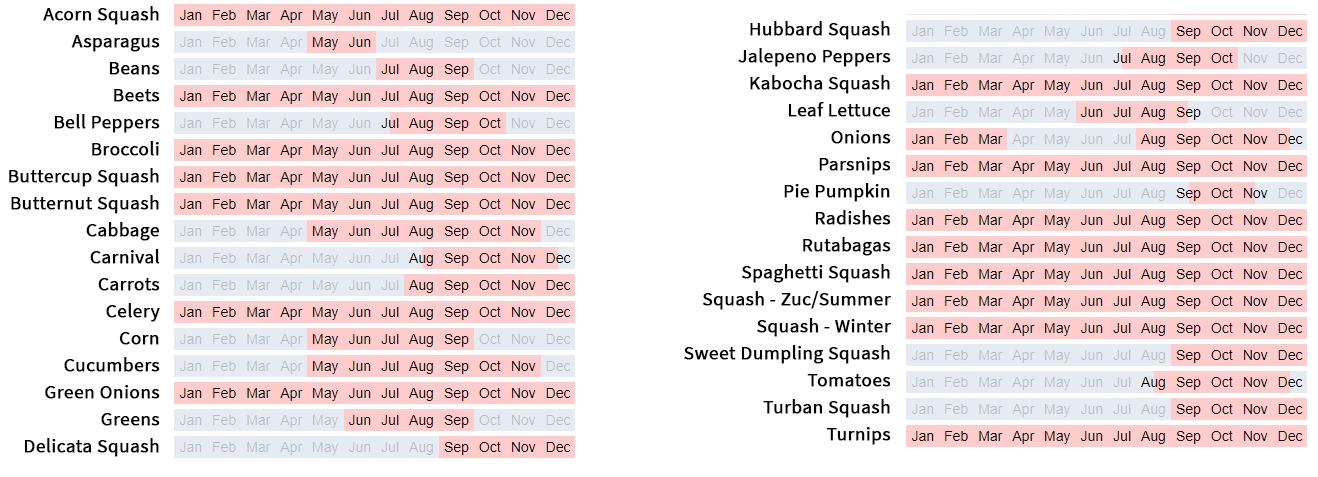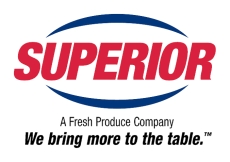Our Commodities
Acorn Squash
Acorn Squash
Acorn Squash is a hard shelled squash with deep furrows. Green to yellow-gold hard rind, and yellow flesh with slightly sweet flavor and somewhat dry consistency.
Asparagus
Asparagus
Asparagus should be fresh and firm with compact tips. Spears should be straight and round, and should snap easily when bent. Diameter of spears is not an indicator of quality. Spears with larger diameters are just as tender and flavorful as slender spears. Avoid asparagus with wilted appearance or spreading tips.
Green Beans
Green Beans
Good quality snap beans should have long, straight pods and be well colored. They should have long, straight pods and be well colored. They should also be free of decay or blemishes and snap easily when bent.
Beets
Beets
Choose small or medium-sized beets whose roots are firm, smooth-skinned and deep in color. Smaller, younger beets may be so tender that peeling won’t be needed after they are cooked. Avoid beets that have spots, bruises or soft, wet areas, all of which indicate spoilage.
Bell Peppers
Bell Peppers
Bell peppers are generally sold by color. All sweet peppers are green at the immature stat. As the peppers mature, they turn color. The most predominant color for a mature pepper is red. All sweet peppers are characterized by their bright skin color and fairly sweet flavor.
Broccoli
Broccoli
Broccoli is an edible green plant in the cabbage family whose large flowerhead is eaten as a vegetable.
Buttercup Squash
Buttercup Squash
Flat, round squash with turban-shaped top. Hard rind is dark green with some gray flecks or stripes. Orange flesh is slightly sweet with a somewhat dry consistency.
Butternut Squash
Butternut Squash
Large squash with an elongated, bell shape. Hard, tan-colored rind and yellow-orange flesh.
Cabbage
Cabbage
Good quality cabbage should be well formed, fairly even colored and heavy for its size. For green and red cabbage, leaves should be very compact and fairly smooth. Savoy cabbage leaves should be crinkled and less compact. Avoid discolored or wilted cabbage.
Carnival Squash
Carnival Squash
A small to medium sized squash ranging in diameter from 5 to 7 inches. Round and hard skinned, the inner, somewhat stringy flesh has a mellow, but sweet flavor similar to sweet potatoes. This squash can be baked, pureed, or steamed to be served as a side dish seasoned with butter and herbs, or used as a base for soups and stews.
Carrots
Carrots
Good quality carrots should be well shaped with firm, smooth exteriors. Color should be vibrant orange to orange-red. For best quality, tops should be closely trimmed since they tend to decay rapidly. Avoid flabby, soft, or wilted carrots or product that shows any mildew, decay, growth cracks, or splits.
Celery
Celery
Celery is a member of the carrot family. It is low in calories, high in fiber and a fair source of Vitamins A and B. To pick good celery look for fresh healthy leaves and crisp green stalks. Celery should be refrigerated in a plastic bag and placed in the crisper for up to two weeks.
Corn
Corn
Corn is generally sold according to color. Yellow corn is most predominant; white and bicolor (yellow and white kernels) corn is also available. Primary varieties are characterized by plump yellow or white kernels and well-colored green husks.
Cucumber
Cucumber
Good quality cucumbers should be firm, well-shaped and have an even dark green color and uniform size. Cucumbers may be treated with an edible wax to prevent moisture loss and enhance appearance. Avoid cucumbers that are shriveled, yellow in color or have soft spots.
Delicata Squash
Delicata Squash
The delicate squash is also called the sweet potato squash, although it differs in appearance: the delicata squash has a light yellow skin and it is striped with green or brown lines. The taste of this plant is similar to sweet potatoes` taste, but it has a more creamy texture.
Greens
Greens
Choose greens that are clean and fresh. Avoid wilted or discolored greens. Greens include turnip, mustard, collard, and kale.
Green Onions
Green Onions
Green Onions are grown year-round and can be purchased at anytime through Superior, they are very tasty & can be known as a Scallion as well.
Hubbard Squash
Hubbard Squash
The extra-hard skins make them one of the best keeping winter squashes. These are very large and irregularly shaped, with a skin that is quite “warted” and irregular. They range from big to enormous, have a blue/gray skin, and taper at the ends.
Parsnips
Parsnips
Choose parsnips that are clean, firm and have smooth white skin. Parsnip tops should be well trimmed. Avoid misshapen parsnips or those that exhibit growth cracks, bruises, cuts, or discoloration.
Pie Pumpkin
Pie Pumpkin
Pumpkins are susceptible to chill injury and will decay if stored at low temperature.
Radishes
Radishes
Radishes should be bright in color with firm, well formed roots and crisp, white flesh. Attached tops should be green and fresh. Avoid radishes that appear dry, wilted, spongy, rough-skinned or with external damage.
Rutabagas
Rutabagas
Choose rutabagas that are clean, well shaped, heavy for their size, and fairly smooth. Avoid rutabagas that show signs of shriveling, flabbiness or growth cracks.
Spaghetti Squash
Spaghetti Squash
Large, oblong shaped squash with yellow, semi-hard rind. Stringy yellow flesh separates into spaghetti-like strands after it is cooked.
Zucchini
Zucchini
Summer squash is a very popular vegetable in the South. You’ll find it fresh, frozen, or canned at any time of the year. Easy to grow and prolific, summer squashes are perfect for any size garden. For best flavor and most tender seeds, squash should be picked young, from 6 to 10 inches long.



